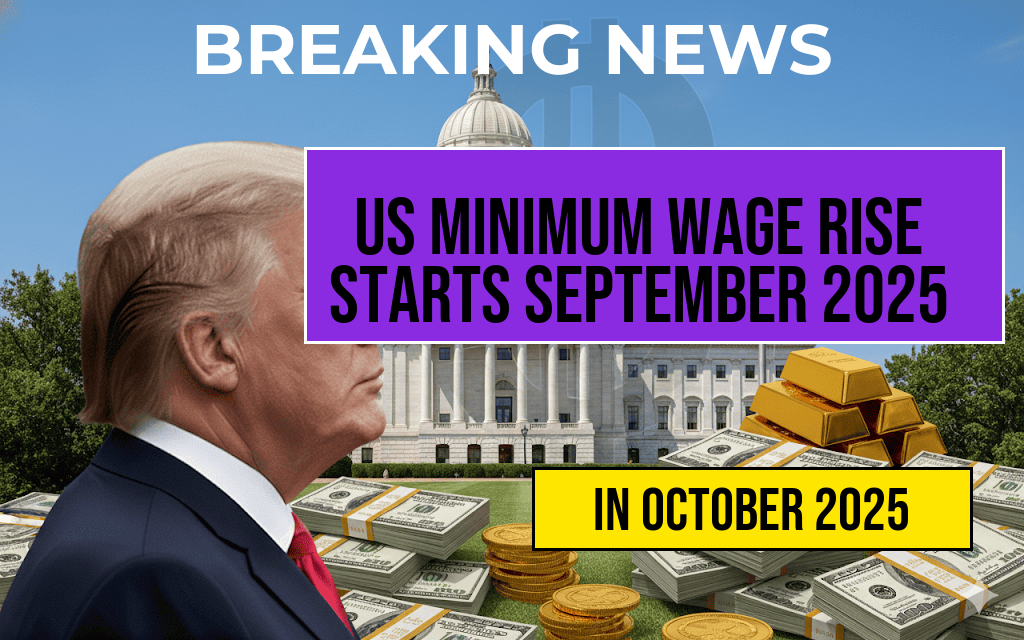The United States will see a nationwide increase in the minimum wage beginning September 30, 2025, marking a significant adjustment for millions of workers across various industries. This change reflects a blend of federal policy updates and state-level decisions aimed at addressing inflationary pressures and improving living standards. The new hourly rates will vary depending on jurisdiction, with some states implementing substantial increases while others adopt more modest adjustments. This revision is expected to impact sectors ranging from retail and hospitality to healthcare and manufacturing, prompting employers and employees alike to prepare for the transition. As discussions around fair wages continue to evolve, the upcoming changes underscore ongoing efforts to balance economic growth with workers’ well-being.
Overview of the 2025 Minimum Wage Adjustment
The upcoming minimum wage hike, set to take effect at the start of October 2025, follows a series of legislative and administrative actions aimed at aligning wages with current economic realities. Federal minimum wage rates, which have remained stagnant since 2009 at $7.25 per hour, are being revised in several states that have made their own adjustments. These updates are driven by factors such as inflation, cost of living increases, and political commitments to wage growth. The movement toward higher wages is also influenced by ongoing debates about income inequality and workers’ rights, with many advocates urging for further increases beyond the scheduled changes.
States and Localities Leading the Change
While the federal minimum remains unchanged at $7.25, numerous states and local governments are implementing their own increases. For example, California, New York, and Washington are among those setting higher minimum wages, with some reaching or surpassing $15 per hour. Several municipalities have also announced phased increases, gradually raising wages over several years to reach targeted thresholds. This patchwork approach reflects the diversity of economic conditions across the country and highlights the importance of regional policy decisions in shaping the wage landscape.
Key Factors Influencing State-Level Increases
- Cost of living adjustments: States with higher living costs tend to set higher minimum wages to support workers’ purchasing power.
- Political leadership: States with progressive leadership are more inclined to implement substantial wage hikes.
- Economic conditions: States experiencing rapid economic growth or labor shortages may adopt higher wages to attract and retain workers.
Full List of New Hourly Rates by State
| State | New Minimum Wage | Notes |
|---|---|---|
| California | $16.50 | Phase-in completed; scheduled to reach $17.00 in 2026 |
| New York | $15.75 | Applicable in New York City; other regions vary |
| Washington | $15.74 | Adjusted annually based on inflation |
| Massachusetts | $15.00 | Effective January 2025, remains unchanged until next review |
| Florida | $11.00 | Set to increase to $12.00 in 2026 |
| Texas | $8.25 | Federal minimum applies statewide |
| Illinois | $14.00 | Phase-in to reach $15 by 2026 |
| Oregon | $15.45 | Includes a cost-of-living adjustment |
| Alaska | $11.75 | State sets its own minimum wage |
| Georgia | $7.25 | Federal minimum remains in effect |
Implications for Employers and Workers
The wage increase is expected to influence employment patterns, wage negotiations, and operational costs. Employers operating in states with significant hikes may need to adjust budgets and staffing strategies accordingly. Small businesses, in particular, could face challenges balancing increased labor costs with maintaining profitability. Some industry experts predict that higher wages may lead to increased consumer spending, stimulating local economies. Conversely, critics argue that sudden wage hikes could result in job cuts or reduced hours, especially in sectors where profit margins are thin.
Industry Perspectives
- Retail and hospitality: These sectors typically employ a large proportion of minimum wage workers and are most directly affected by the changes.
- Healthcare: Some facilities may face staffing cost increases but also benefit from improved staff retention and morale.
- Manufacturing: Wage hikes could influence supply chain costs and automation decisions.
Looking Ahead
The scheduled increase represents a pivotal point in the ongoing debate over wage standards in the U.S. While some advocates see it as a step toward economic fairness, others urge caution over potential job impacts. Policymakers continue to monitor economic conditions, and further adjustments may be proposed in upcoming legislative sessions. For workers, the change offers an immediate boost in earnings, but it also underscores the importance of advocacy for living wages and equitable economic policies.
Additional Resources
- Wikipedia: Minimum wage in the United States
- Forbes: The Impact of 2025 Minimum Wage Increases on Businesses
Frequently Asked Questions
What is the effective date of the new U.S. minimum wage increase?
The new minimum wage rates will take effect on September 30, 2025.
Which states or regions are affected by the new minimum wage rates?
The full list of states and regions implementing the minimum wage increase is included in the article, detailing specific hourly rates for each area.
How much will the minimum wage increase in different regions?
The article provides a comprehensive breakdown of new hourly rates across various states and jurisdictions, showing the specific wage adjustments.
Are there any exceptions or special cases included in the new wage rates?
Yes, some regions may have exceptions or phased-in increases. The article details any special provisions or scheduled adjustments.
How might this minimum wage increase impact employers and employees?
The increase is expected to boost earnings for workers and may influence employer labor costs. The article discusses potential economic and employment implications.

Leave a Reply